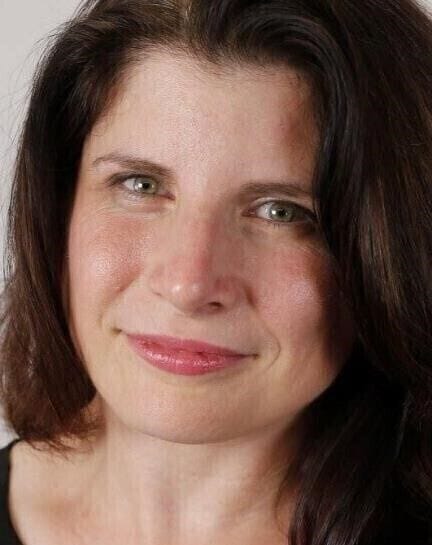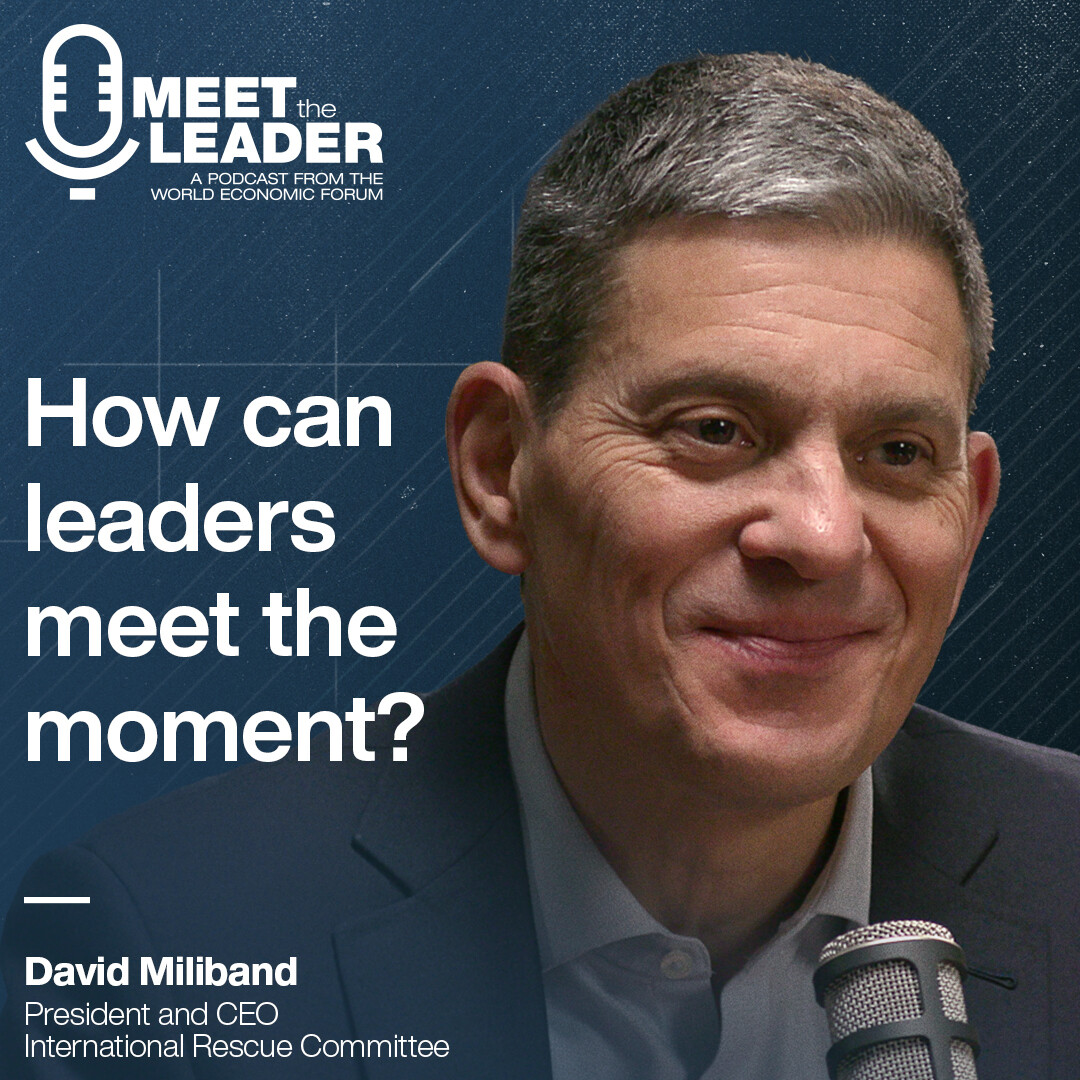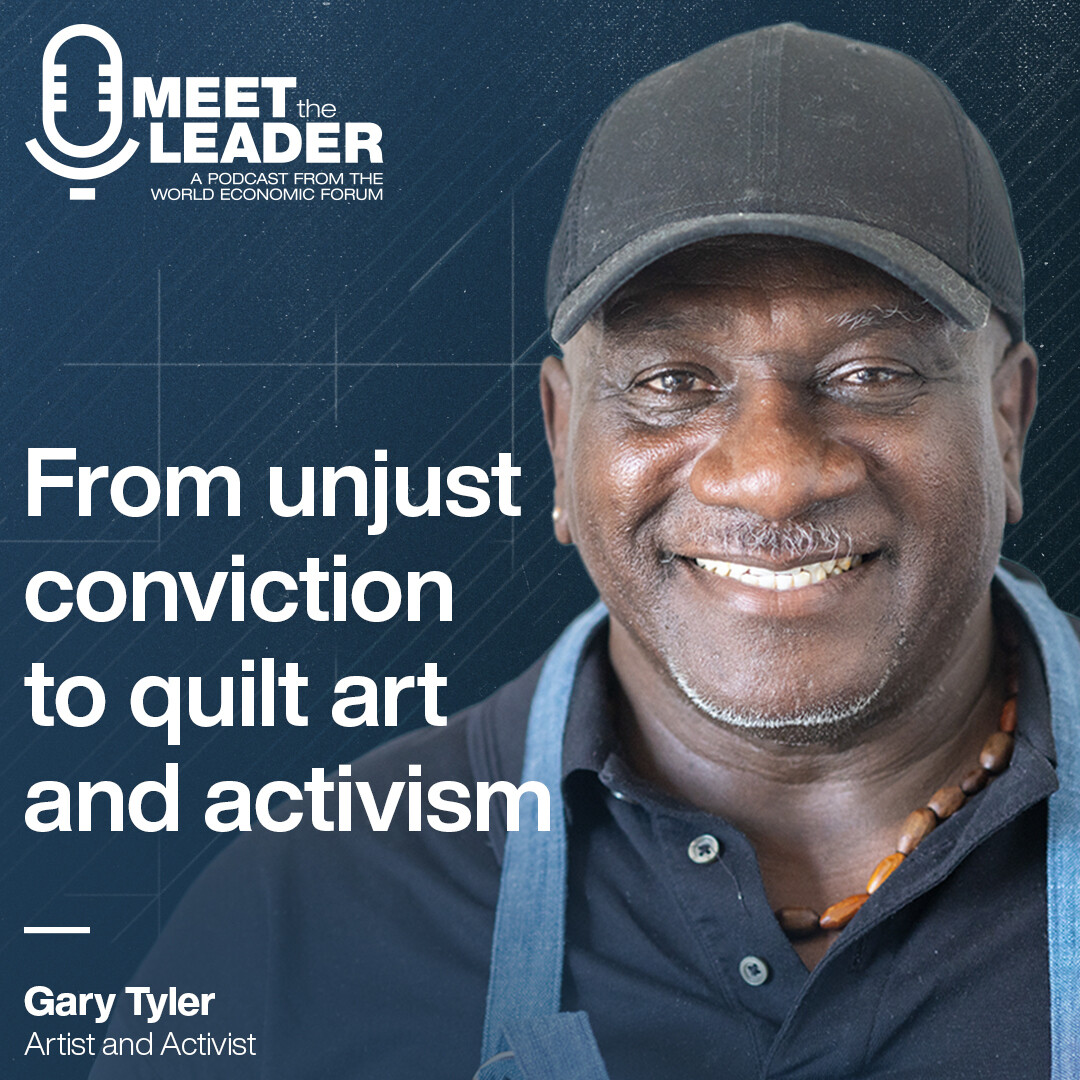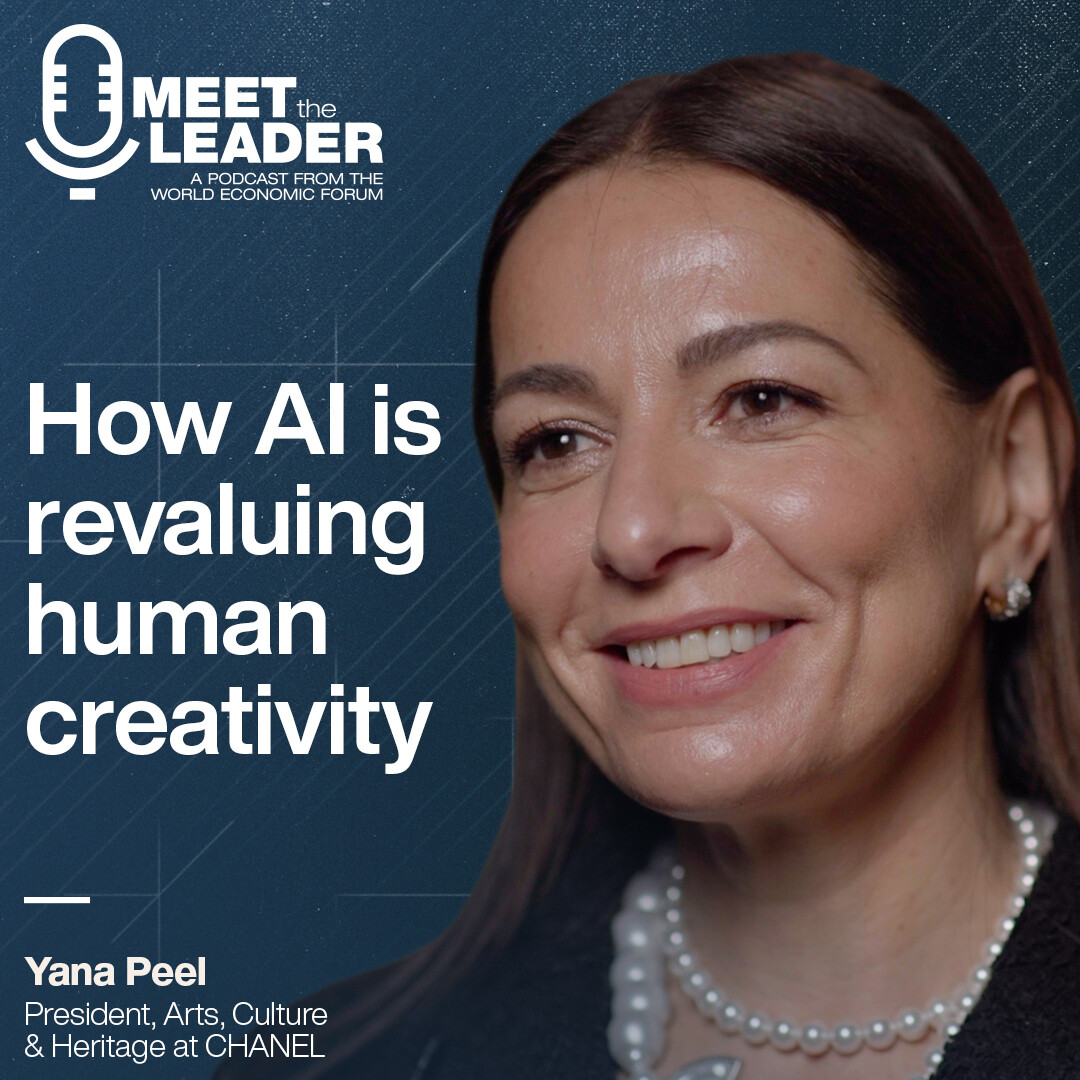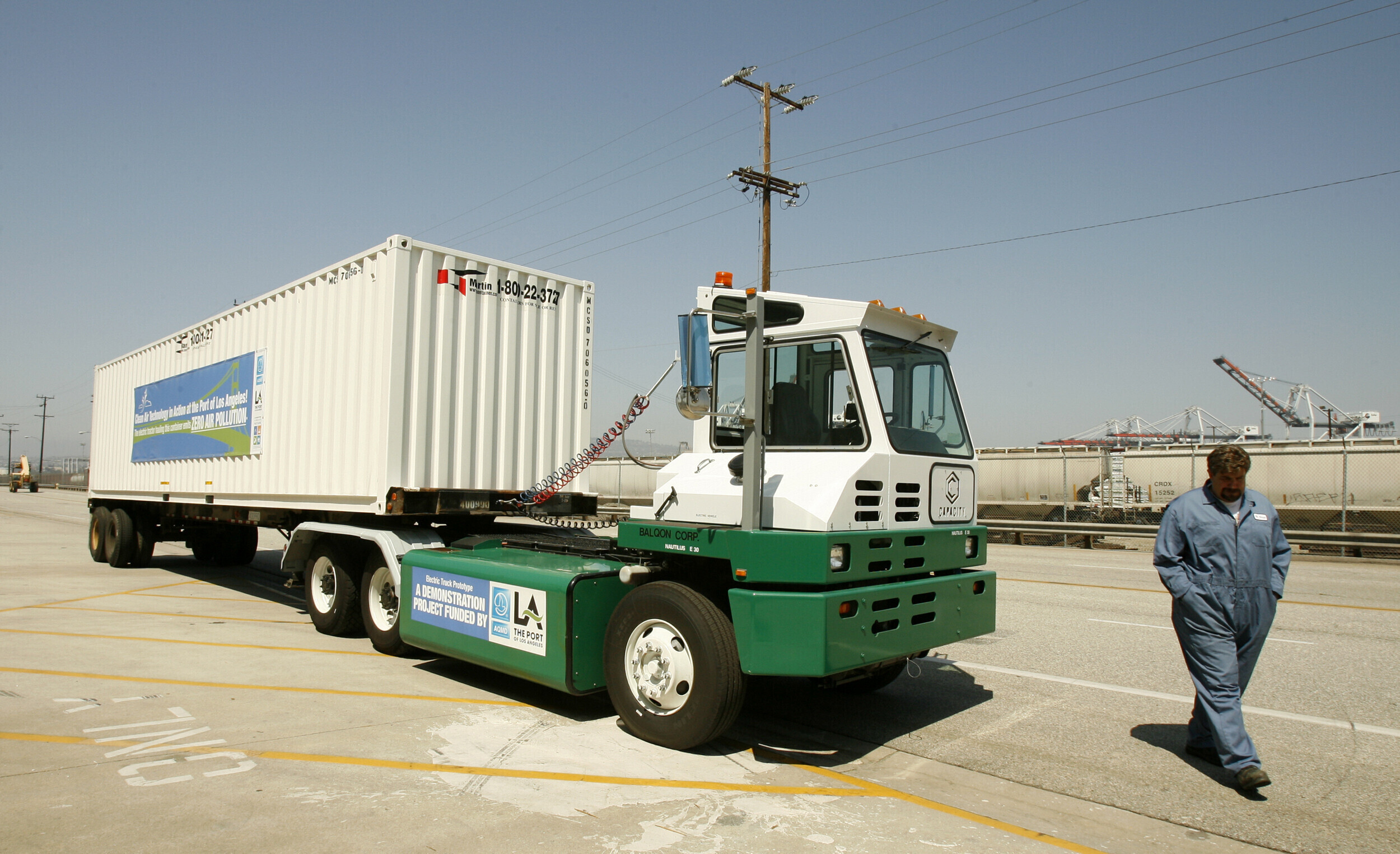2 simple questions help this carbon removal CEO focus on what matters: Charm Industrial
播客文字稿
Linda Lacina, Meet The Leader Welcome to Meet the Leader, the podcast where top leaders share how they're tackling the world's toughest challenges.
In today's episode, we talk to Peter Reinhardt. He is the CEO of Charm Industrial. And he'll talk about new tech for tackling emissions and how to sharpen your focus on what really matters.
Subscribe to Meet the Leader on Apple, Spotify and wherever you get your favorite podcasts. Don't forget to rate and review us. I'm Linda Lacina. From the World Economic Forum. And this is Meet the Leader.
Peter Reinhardt, Charm Industrial Thousands or maybe tens of thousands of tons of permanent carbon removal have ever been delivered, and we need to deliver 10 billion tons a year by 2050. So between now and 2050, the carbon removal market needs to be growing at 70% per year, which is double the pace that the software market grew over the last 30 years.
Linda Lacina, Meet The Leader Carbon dioxide emissions are warming the globe in ways not seen in millions of years. This is leading to a host of calamities, including floods and fires. If we can remove it, however, we could get back to safer levels, maybe even slow the impacts of climate change.
Enter carbon sequestration. That is a process where carbon dioxide is taken out of the atmosphere and stored, often deep underground. This reduces the amount of carbon in the air and can get us to what's known as an overflow in our carbon budget.
I recently talked to Peter Reinhardt. He is the CEO of Charm Industrial. Charm captures carbon in rotting plants or biomass. Turning that into a stable liquid that it pumps deep into the ground. He talked to me about this process and why new solutions like these are so critical to tackling climate change.
He also talked to me about his company's unique story Charm's co-founders were roommates, first at MIT, and then they all founded a data analytics company. In fact, Peter actually ran that company and Charm simultaneously.
He shared with me not just how he made the pivot to work on Charm full time, but how he developed as a leader. He sought out a CEO coach and along the way developed approaches to sharpen his focus, make the most of his limited time and attention as CEO.
His co-founders are still together, still challenge each other and continue to leverage each other's unique talents. He told me how they do it and how other teams can benefit from their approach.
He'll talk more about that, but first, he'll talk more about Charm and carbon removal.
Peter Reinhardt, Charm Industrial Our mission is to return the atmosphere to pre-industrial carbon dioxide levels of 280 parts per million CO2. And the way we do that is we pump barbecue sauce underground. More specifically, all this carbon dioxide gets captured by plants every year, and then every year we let it rot. So 100 billion tons of CO2 comes out of the atmosphere into plants and it rots or burns and goes back. So we take the plants that are about to rot or burn and we cook them into a liquid called bio oil. It actually is the active ingredient in barbecue sauce. And then we inject that into old abandoned oil wells.
Linda Lacina, Meet The Leader For people who might not know enough about, you know, these processes and these technologies. Let's start with just carbon removal. Can you just explain carbon removal for people who might not be familiar?
Peter Reinhardt, Charm Industrial Yeah. I mean, the challenge at this point from a climate perspective is that we've sort of overflowed the atmosphere with with carbon dioxide. There's too much of it. We're still emitting more. And in order to get back to sort of a safe long-term level, we're going to have to go actually take carbon dioxide out of the atmosphere and store it somewhere forever underground in rocks, whatever. There's much more options, but we're going to have to store it somewhere. And so carbon removal is the act of taking that carbon dioxide out of the atmosphere and storing it somewhere so that we haven't overflowed our carbon budget.
Linda Lacina, Meet The Leader And carbon sequestration is a little bit different. Tell us a little bit about that and how it's related to carbon removal.
Peter Reinhardt, Charm Industrial So the storage component is really where the sequestration comes in. And carbon dioxide wants to be a gas. It's very stable. The reason why it's an output of all the fossil fuel burning is it's it's sort of energetically stable. And so if you want to store that carbon dioxide somewhere, if you want to sequester it, you have a few options. You can compress it and pump it underground into very special sort of geological features. That's like direct air capture, for example, or carbon capture rooms and underground storage.
There's some people who have figured out ways to use carbon dioxide to react with rocks like silicates and sort of store it in rock or in dissolved baking soda, basically, that flows out into the ocean.
And then our approach is another example where it's captured in plant matter turned into a liquid and and stored deep underground. So the storage part is really where carbon sequestration comes in.
Linda Lacina, Meet The Leader And generally, how would you sort of rate our efforts to take carbon out of out of the atmosphere? How would you rate those efforts?
Peter Reinhardt, Charm Industrial Poor. I actually was a buyer of carbon removal, which is how I got into this in the first place back in 2015 or so. I was running a software company called Segment and we did a bunch of emissions reduction work and then had some emissions leftover that we couldn't reduce, and so we needed something to remove and I became a buyer of what I thought were going to be carbon removals. And I discovered pretty quickly that unfortunately most of them were sort of scams or super low quality. And so I started trying to figure out what it really might look like. This was this is a while ago, but in 2019, 2020, a lot of research came out of Berkeley and other places. So the quality of what's been out there from a carbon removal or carbon offset perspective is, is really, really poor. And that's what motivated me to sort of go look for a solution that would be really measurable, really permanent, etc.. And that's what ultimately led to Charm.
The quality of what's been out there from a carbon removal or carbon offset perspective is, is really, really poor. And that's what motivated me to sort of go look for a solution that would be really measurable, really permanent.
”Linda Lacina, Meet The Leader And in general, what do you think is needed to sort of like make carbon removal more effective generally.
Peter Reinhardt, Charm Industrial It really comes down to incentives where the old registries, the old verifiers were paid by the project developers to develop their accounting protocols, and then they were paid again when they gave a green checkmark. And it's not hard to see how that incentive system would result in like rubber stamping a bunch of stuff that wasn't actually that good, doesn't have the natural tension to it that an auditor should have.
And so I think there are some new entrants like Isometric, for example, is a new registry that has changed that incentive structure to one where they invest their own capital to develop accounting protocols. It's not paid for by the project developer. They get paid whether they give a red or green in terms of the quality of the audit. And that's a really important incentive shift. I think it is an important shift also towards a future regulatory market where a regulator has a really pure incentive like that. And what I would like to see and what I think people can help drive in the nonprofit world, the corporate world, is a push towards verifiers that have that incentive structure because it creates the natural tension that will weed out a lot of these quality issues to begin with.
Linda Lacina, Meet The Leader And how do we get to that? Who should be owning that process? What does it look like?
Peter Reinhardt, Charm Industrial I think nonprofits and governments should be pushing for to have verifiers take on that sort of business model and incentive structure that Isometric has pioneered. And corporates should really be asking -- when they're going out and buying offsets -- they should require that the project developers they're signing those credits are getting them verified through registries that have that incentive structure. I think that we've got huge ways towards cleaning up the market.
Linda Lacina, Meet The Leader And if those steps aren't taken, what happens?
Peter Reinhardt, Charm Industrial If that doesn't happen? I think we'll see like the same sort of degradation that we've seen over the last few years. There has been a bit of a collapse in the voluntary carbon market over the last few years. And we're already way off of where we need to be from a carbon removal perspective. You know, like thousands or maybe tens of thousands of tonnes of permanent carbon removal have ever been delivered. And we need to deliver 10 billion tonnes a year by 2050. So between now and 2050, the carbon removal market needs to be growing at 70% per year, which is double the pace that the software market grew over the last 30 years. Right. So it's an astonishing pace of growth that's required, and that will not happen if we don't have the kind of trust and audit tension in the market to ensure high quality.
We need to deliver 10 billion tonnes a year by 2050. So between now and 2050, the carbon removal market needs to be growing at 70% per year, which is double the pace that the software market grew over the last 30 years.
”Linda Lacina, Meet The Leader And to also scale the work. What do you think is needed in order to each one of these solutions to be able to scale and grow and make sure that they're taking out even more and more and more out of the atmosphere?
Peter Reinhardt, Charm Industrial I think there's a couple of things. One is customers that think in very catalytic strategic ways. Microsoft is the most prolific buyer in the carbon removal space, and that's had an incredible impact. And I think what is so impressive about what Microsoft [Editor's note: Microsoft is a member of the World Economic Forum's CDR sector of the FMC] has done is they looked actually pretty far ahead and said, you know, at some point there's going to be a regulatory market. There will be a required compliance to hit net zero at some point. And if that's going to be the case, we should make sure that we both have a plan to get the reductions in place, but also for the things that we can't reduce that we have a plan for how to remove it. And so they looked ahead to the 2030s and they said, okay, we'll probably sometime in the 2030s, this compliance market is going to come into, come into effect. And so how much removal are we going to need in 2030? And it's millions of tonnes.
And you can't have millions of tons sprout out of the ground in 12 months. It has to come from somewhere. It has to be built and developed. And so I think Microsoft deserves -- and Frontier Climate has an advance market commitment vehicle -- deserves a lot of credit for pulling categorically new suppliers into the market by making large purchases. Frontier has a $1 billion advance market commitment. Microsoft has now procured billions of dollars of forward purchases of carbon removal, and that's pulled forward the industry massively towards higher quality and towards actually having capacity. I think the buyers that are thinking, in 2030 or 2035 or 2040, whenever it is that they've made a net zero commitment, that they're just going to show up and buy a carbon removal on a spot market, then the capacity will not exist unless the purchasing kind of starts now on on a ramp.
And so I think for corporate buyers who are thinking about carbon removal in their future, they don't have to buy a lot, but they do need to be thinking about buying catalytically across a portfolio to both get exposure for how to buy these things and how to verify them as well as to create the capacity so that when their compliance commitments land that they actually have the supply chain in place to do so.
Linda Lacina, Meet The Leader I should note, Microsoft is a member of the World Economic Forum's Carbon Dioxide removal sector of the First Movers coalition, that’s a global coalition of companies leveraging their purchasing power to decarbonize the world's heaviest-emitting sectors.
I wanted to ask: Is there something that with these conversations that you either feel like is missing, isn't talked about enough or something that even just frustrates the heck out of you? Is there something that you're like, gosh, if people just understood this
Peter Reinhardt, Charm Industrial There's a lot of talk about the trying to build the voluntary carbon market and it's just a question of standards and so on. But ultimately it all kind of comes back to the fact that voluntarily people don't want to buy carbon removal in a sort of abstract market sense. They more want a partner on it. They want to have it in their supply chain with insetting, or they want to be close to the co-benefits, have co-benefits of the carbon removal that impacts their employees or their customers in some way because that's better for their whole stakeholder base.
And so I think we have to remember that the point of the voluntary carbon market is not to have a market. The point is actually to deliver carbon removal and to deliver these offsets, deliver these climate change benefits.
And actually, if buyers want to buy in bilateral ways that actually don't hit a market that aren't commoditized because they want to capture and derive value for their stakeholders from all these co-benefits that go along with it, we should make that happen. Like, great, let's do more bilateral sales that actually sort of bring direct value to stakeholders because that's what they can do as voluntary corporate buyers today. And I think there's not enough understanding actually that these co-benefits and the impact to other stakeholders is actually what drives voluntary buyers today. And we're a little distracted by trying to rebuild a market.
Linda Lacina, Meet The Leader And with that understanding in place, what would change?
Peter Reinhardt, Charm Industrial I think it'll put a lot more buyers into the space, right? If you're just going to allocate some budget to a market at a distance and the money kind of disappears and you're not really sure what happened. That's a hard market to grow. You know, say you're a manufacturer and you build things. And in Wichita, Kansas, we have operations outside of Wichita, Kansas, or you're a manufacturer in Colorado. We are literally taking wildfire fuel load reduction fuel that would otherwise turn into particulate and be like a poison, an air quality poison, for people in those communities. And we turn it into carbon removal. So that co benefit of it literally is an improvement for their customers or their manufacturing population is much more compelling and I think draws a lot more buyers into the market to drive the sort of catalytic investment that will be required to scale to then having regulatory markets that then ultimately scale to the sort of climate relevant impact.
Linda Lacina, Meet The Leader With Charm, many tons hvae you guys sequestered so far and what might that look like maybe in 2030?
Peter Reinhardt, Charm Industrial Today we've delivered 7,000 tons of carbon removal. Sadly, this is not a climate relevant number. Right? But it actually is a huge proportion of the total carbon removal that's been delivered to date. Permanent additional, etc.. Probably around 50-ish percent permanent carbon removal. And it's something we're working really hard to to scale up. Just in the last few months, we've gone from 1 to 6 of our pyrolysis machines that produced by oil in Colorado. And by 2030, we should be talking in the like millions of tons per year, which is still not quite climate relevant, but it creates that exponential scale that starts getting to 100 tens, hundreds of millions and maybe even billions of tonnes by 2040, 2050.
Linda Lacina, Meet The Leader And what would need to change in order to get to climate relevant numbers either with, you know, sort of momentum or with time? What would need to change?
Peter Reinhardt, Charm Industrial The first thing is we need more voluntary buyers to make the catalytic investment now to then ensure that they have the supply chain in place for when the compliance markets land in, say, 2030 and beyond. We actually need those compliance markets to come into existence. So that's a lot of lobbying and policy work and so on for spreading that across jurisdictions. You have some states in the US like the low carbon fuel standard in California, Oregon and Washington starting to be considered in some other states. So I think you have state level programs that could expand across other states and maybe to a national scale and then an international scale. And then those markets, I think, are what pull us forward to to that scale of impact.
Linda Lacina, Meet The Leader When we take us back to sort of the beginning. Right? So you you leave MIT, you start a startup, a data analytics startup called Segment. And I read you had a blog at the time where you talked about how you felt like you were able to leave MIT with purpose. Some people leave because they graduate and then they sort of, you know, are finding their next step. But you left with with purpose. Can you tell us a little bit about Segment and what was it that, you know, made you think, you know what, this is my next step. This is what I want to learn. This is what I want to build.
Peter Reinhardt, Charm Industrial At MIT, I felt like I was studying aerospace engineering and I kind of felt like I was being trained to be like, you know, engineer Number three or level three deep in the bowels of some lake, improving some jet engine. And that's like such a worthy cause. And I'm so glad that some people love to do that. And it it didn't speak to me. And in our junior year, myself and my roommate kind of discovered the blogs of Paul Graham and Y Combinator startup accelerator in Silicon Valley. And we got really inspired about starting a company together. So that was what we did. We actually got into Y Combinator and started building a classroom lecture tool, and it wasn't so much that we felt this deep attraction to like building marketing analytics. It was actually kind of two failed pivots in order to find that business, which turned out to be a great business. But it was really that we wanted, I at least wanted, a trial-by-fire MBA and found that sort of being thrown into the deep end very and learning quickly, very gratifying. And two really wanted to start a company with my best friends. And so one of my exit goals at the end was to remain best friends, which I'm proud to say that we did.
Linda Lacina, Meet The Leader And how do you do that? How do you remain best friends with people that you kind of built something out of nowhere with?
Peter Reinhardt, Charm Industrial Yeah, I think many founding teams kind of don't prioritize that. But I think I think it takes a lot of humility on all sides to, like, make that work right. In my case, my co-founders stayed in the business as engineers and it was incredible to have friends and co-founders who were that deep in the business to help me understand, as CEO, what was what was happening, how we can improve things. But I credit them a lot, actually, with making it work. It takes an enormous amount of humility to let a company grow around you and to continue contributing in whatever way you can. So I think honestly, credit to them. It's them that made it work.
Linda Lacina, Meet The Leader In the early days, you folks all lived together as you built the company. Does that also help where, you know, you aren't maybe retreating to some apartment or something? You know, you you can kind of mull on something alone. You're together all the time. And so you you are forced to sort of like talk and deal and share and do. Does that sort of help make sure that things move forward?
Peter Reinhardt, Charm Industrial It's possible. I mean, all of our near-death experiences happened while we were living together. I mean, certainly the sort of final one where I, I had actually moved out, I got married and was living a few blocks away, and I actually tried to kill the last idea we had, which was the idea that ultimately took off. I'd had the first idea we should build this classroom lecture tool, a big vision around. It turns out the world didn't care. Then I had a big vision about an analytics tool. Turns out the world didn't care. And then we had this little open source library that was on Hacker News and that was on GitHub. And some people had kind of started paying attention to it, storing it and using it and my cofounder Ian thought that that would be a good, a good business and I could not see it. And so I actually tried to kill that. And it was in the act of trying to kill it that I sort of forced us to post it to Hacker News and see if it was something that people were interested in and it worked and took off. But yeah, that was the sort of last really truly near-death experience that we had as a company. And we were jammed into a single apartment and, and pretty inseparable. So yeah, it's possible.
Linda Lacina, Meet The Leader You gave a lot of credit to your co-founders in sort of like helping make that a success in the early days. Somebody listening to this or watching this, is that something that they should be keeping in mind? So it's not just sort of saying humility, right? Because everybody thinks they're humble. Everyone's a great listener. Everyone's kind. Right. No one would ever say they're not those things. But if you can give someone like something tangible to do and say, Have you given credit to someone, it makes you think outside yourself, you know, is that something you think might be a helpful tool for someone in trying to make sure that they're they're practicing the humility that they think that they have.
Peter Reinhardt, Charm Industrial The story I think really is one of -- at every point in the company's history, and Segments history, it actually took all of the co founders to make it work, right? Like even if you just look at the very beginning of it and I think maybe this is where a little bit of the humility came from is like there was no single owner. Like it came from all of us, right? Like the very first lines of the JavaScript file that became the open source library that took off. And we look back in the GitHub history where, like my co-founder and myself kind of riffing on how to solve a problem. But then it was Ian and Calvin who actually recognized that it might be something that other people might want. And it was Ian's design sense and like insane sense of quality that created the web page that actually attracted people to want it. It was Calvin who figured out how to get a lot of the infrastructure to scale, and it was Elliott who figured it out. The follow on products that people actually wanted. And ultimately it was me that figured out a lot of the sales engine and hired the people who could figure out how to scale it. And so there's like there's no way that that company got built without all four co-founders putting it together. And I think there was functionally in that humility that none of us could have done it on our own.
Linda Lacina, Meet The Leader I think big companies sort of lose sight of what happens in startups, where startups take everybody pulling their talents, pulling their different experiences and things where maybe in a big company it's very maybe a little bit more command control sometimes where it's like, I have the solution, why don't you guys get on board? Do you think that there's a value in sharing the wealth attitude that is important when you're building anything, whether it's a new startup, maybe even a new process or something smaller?
I don't think anything important gets built without a lot of people contributing. And I think it is an important part of a leaders job to recognize and reward those people for the parts that they've played in it.
”Peter Reinhardt, Charm Industrial I don't think anything important gets built without a lot of people contributing. And I think it is an important part of a leaders' job to recognize and reward those people for the parts that they've played in it. And even Charm, like the seed of the initial idea for a charm was there's no good product for me. Peter, CEO of Segment to go buy here. I wish there was a good product. And so the general direction of like, let's do something with biomass and industrial and maybe even like leave some char behind on the field where like there was this general notion that there was something interesting here. But as my co-founder, Sean, who figured out that like, actually we're never going to be able to transport the biomass, so we should use mobile systems to convert the biomass. Part one. And part two, you know, he was trying to figure out how to dispose of this bio oil that we'd created, and he was like obsessing over this disposal problem. And I was like, why? Like, stop. Like, this is not a useful thing to be thinking about. We need to be focusing on, you know, finding a use case for the bio oil and not trying to dispose of it. But it was his insistence on digging into that, that then after a week or two, he came back and he's like, you know, if we put it down an injection well, which is a disposal option, isn't it a carbon removal? Maybe Stripe would be interested in buying that. And then we talked to our friends at Stripe and they were like, Yeah, sure, we'll buy $250,000 of that. Thank you very much. This thing doesn't happen except in this very special circumstance where you have many people contributing to pull these things together.
Linda Lacina, Meet The Leader You kind of got into Charmed in part because you had gotten a little bit into carbon buying and things like that. Tell me a little bit about the tipping point for when you sort of get interested and involved, to the point where like, yeah, I can't kind of stop. I can't let this go. What does that look like?
Peter Reinhardt, Charm Industrial Initially, we were just like, Hey, look, it's the responsible thing. Employer branding, yadda yadda. Like we should we should figure out how to how to reduce our emissions. So we did the easy things. Easy things are buy clean power and, you know, replace beef with chicken on the menu.
Great. Okay. You just eliminated like 70% of your emissions as a software company. Except for flying salespeople around and a few of these other things like. Okay, well, what are we going to do about that? And so that's where the offsets world. That was sort of my entree to the offsets world.
After a year or two of that, I really wanted to know what had happened. Like, I like to understand things at a base level. And I didn't understand, like, what was happening in that supply chain. And the deeper I dug into it, the more I got sour on it. And so once I got sour on it, then I also got more exposure to climate. I started to understand even more how dire it was. I started to feel like this was something that was more fundamentally broken.
For a while I wrote it off as like, well, you know, maybe Clinton will get elected in 2016 and, you know, this will just get kind of solved through regulation, which is naive on like 17 different levels that we don't need to get into.
But the point was, I thought it could be solved through regulatory action. And what I started to realize in 2017 was actually regulation on its own was never going to fix that. There were fundamental problems in the supply chain, things that hadn't been invented, companies that hadn't been built, products and infrastructure that didn't yet exist. And that's when I started to spend every Saturday trying to figure out what good might look like from an actual process engineering, physics, chemistry perspective. So that's how I fell down the rabbit hole.
Linda Lacina, Meet The Leader And so you say you spent every Saturday trying to figure this out. What does that look like? Paint a picture for me.
Peter Reinhardt, Charm Industrial Yeah, I'd go into the office, eventually brought in a friend, Kevin, who who became a co-founder at Charm. And we would spend every Saturday sitting in my office at Segment going through the different pathways that we were looking at for how carbon removal might work and industrial decarbonization, sort of a bucket of things. And we'd build giant spreadsheet models to try to understand the economics of things and say like pretty much every week was like, well, this idea looked interesting and doesn't work. Try again next week. And so we were just just cycling through all kinds of things, growing algae, you name it, and eventually found the pathway similar to what Charmed is doing. Now that looks like well, it kind of looks like it might work if it might work. Then I was hit with the real existential question in January of 2018, which is, if we have a pathway that actually might work, was pretty irresponsible to not going to do it. And I was CEO of Segment at the time all the way up to January of 2022 after we sold the company. And so figuring out what to do with that, I tried to recruit some friends to be CEO of it. No one was interested. And so in February 2018, I was holding this thing where I was like, I think this might work and now I can't let it go. And so that was actually the harder moment, which was like, Well, okay, it's going to be hard mode for a few years and we're going to have to do both.
Linda Lacina, Meet The Leader And how did you get through that? I mean, there are CEOs famously in our day that have multiple things that they're the CEO of. What was your strategy to sort of helm two at once?
Peter Reinhardt, Charm Industrial Yeah, I spent a long time talking with friends and a coach about this and actually started to realize that in some ways it was a good forcing function for me to scale Segment better. And initially it was maybe like 4 to 8 hours a week really spent on Charm with some great co-founders who were who were pushing things along day to day, kind of grew over time so that by the time I transitioned, I was obviously 100% on Charm. But it was it was really a forcing function to figure out like: how do I delegate better, How do I get clearer about what the actual priorities are? Being the leader at Segment at the time was, you know, 300 to 600 people over the course of that period. And it can be quite detrimental, actually, if the CEO is as high bandwidth and digging into all the details all the time. So I actually found in some ways it was a it was a good forcing function actually for me to just get better.
Linda Lacina, Meet The Leader Now, you said you worked with the coach. What led to that?
Peter Reinhardt, Charm Industrial I went straight from college, dropped out and started the company. So it's safe to say I had no exposure to what management was, no exposure to what running a business was and no exposure to like anything in the business world. And so, yeah, I have a great coach who was previously CEO and co-founder of his own company. Tim Porthouse was quite helpful in figuring out how to do those things. Very Socratic method like forcing you to think through it on your own.
Linda Lacina, Meet The Leader We talked to CEO coaches and leadership coaches all the time and some of the things that are most interesting are the things that people hit all the time where just like you said, hey, sometimes people get too much into the details or people want to fix things. If I could just fix this one thing. They're like addicts, right? For you, was there a surprise in that process that you're like, gosh, I didn't realize I was doing this.
Peter Reinhardt, Charm Industrial The best story actually might have been before I got the coach, but as a representative, when we were about 50 people, I was walking down the hall at segment and we were in kind of a crisis because revenue growth would stalled around $12.5 million in revenue. And I was pretty freaked out about this. It was clearly a problem with pricing. And so I was spending my time trying to figure out how to fix pricing.
And our part-time head of HR and our our part-time CFO cornered me and pushed me into a room. And they said, Peter, nobody knows what they should be working on. I said, that's the most ridiculous thing I ever heard. Everyone knows that they should be working on. And they were like, "Nobody knows. Why don't you write it down on the board?" And so I wrote it down and they were like, you know, pricing and a few other things.
And they were like, "if you go and ask 50 people in this company, what do you think the distribution -- Do you think everyone's going to know those things?" And then it dawned on me that, yeah, probably they don't actually know what those things are.
And so they said on Monday, at All Hands, you need to get up and you need to present that these are the biggest problems facing facing the company. And I was like, but I can't I can't just, like dump these problems on everyone. That seems unfair. And they're like, no, no, you have to do it. And so I had this huge guilt complex basically, of like going to everyone on the team and saying, like, Here's my biggest problem as CEO. Like, I need your help to solve this biggest problem in the company and dump it on my team to help solve. And I don't know why. I was afraid to, like, admit that there was a problem, etc., and felt guilty about it.
After presenting it, I also included in the ask like and I need this product team to work basically nonstop, almost 24-7, over the next week (which I felt very guilty about). To ship a new pricing model. And they did and it was hugely successful. We're accelerated revenue growth from 12.5 to 20. And it was due to pricing change and some other changes in sales. And, you know, I was feeling guilty about that basically for years. And then when we sold the company, we went back and we called some of these early, early people who were on that team and across the whole company. And for those people on that team, we asked them, as we did everybody. What was your favorite memory of the whole thing of Segment? And the people on that team said, it was that time that you asked me to stay up and work 24-7 for seven days to get out the new pricing model. And that hit me like a ton of bricks. I was just like, it makes sense, actually. They got to be the heroes that saved the company. Who doesn't want to do that? And so all that guilt that I felt, you can't ask people to work 24 seven all the time, but that guilt was going to be there. It was it was actually their favorite part of the whole whole damn thing.
Linda Lacina, Meet The Leader Is there something that you do as a leader now that just would not have occurred to you when you started Segment?
Peter Reinhardt, Charm Industrial I think that I did not appreciate the value of focus, especially as an organization gets bigger. The list of priorities that the CEO can hold has to get shorter. And I think actually by the end when when we were acquired, Segment was actually quite, quite distracted not only by lots of internal programs that sort of made sense, like, this new product that kind of makes sense and this new product that kind of makes sense. And you know, this new region of sales, that kind of makes sense. And I wish that I had kept it much narrower. Like, we probably could have just been like, we're all in on North America. We only have this one product and maybe one new one. Like, we could have kept the whole thing so narrow and that narrower aperture would have led to so much faster growth. But we were also distracted by like the current thing, right? The company kind of, in respecting me and the rest leadership team as leaders, wanted to know how we felt about COVID, how we felt about all these things that were not core to the business in any way, shape or form. And nor were we experts on. And I, in retrospect, should not have given in to that pressure and should have kept it focused on we're here to do this. This is what we're going to talk about and is what we're on to execute on. And I think we've had to do some of that same same work at term to narrow the aperture.
Linda Lacina, Meet The Leader And how does that focus at Charm help you accelerate growth for climate change?
Peter Reinhardt, Charm Industrial It sounds trite. And so I think it's maybe a little hard to articulate how exactly it does it. But I can give an example of what the impact is.
We spent about four years trying to develop our own pyrolysis system, so our own system to convert the biomass into bio oil And it didn't really work right? Like actually, if you look back, most companies take maybe 10 or 20 years to develop a good pyrolysis system. And it is an example, I think, of getting distracted by something that wasn't really the core problem, which is actually we didn't necessarily need to have our own custom pyrolyzer. We just needed a pyrolyzer that we could scale up. And once we made that subtle shift in focus and got an off the shelf system that then we licensed, we then went through 3 revisions over 18 months under anew amazing engineering leader and went from 1% uptime to 65% uptime went from -- cut the cost of the CapEx in half and and so on. Like, you know, massive improvement in performance, massive improvement in cost structure all by narrowing the aperture and cutting off some other extraneous programs. Even the engineering team even shrunk 30% with who was on board with kind of this faster strategy. And the impact is tremendous from from that narrowing of aperture. I mean, just like unrecognizable, kind of like pace of progress.
Linda Lacina, Meet The Leader Is there a question you ask yourself to sort of prompt you to kind of remember, jog yourself into like, wait a minute, Are we getting distracted? Are we going off? We're going sideways a little bit. Is is there a question you ask yourself to kind of gut check?
Peter Reinhardt, Charm Industrial I think that the people have many different opinions about about Elon [Elon Musk], but he's damn right on one thing, which is his sort of operating model for companies, particularly for hardware companies, which is first question the requirements; 2. delete the part; and then 3., to shorten the cycle time and a few other things like automation that actually you never really get to. Everyone tries to jump to automating things, but actually questioning the requirement and deleting the parts -- those are the two things that actually drive by far the most simplification. And from a management level, that's like, why do we need this program and can we delete the program? Before you try to hire people for it or make it go faster or anything. Like do we actually need it? And so those two questions are something that I have put increasing focus on over time as I've learned more as a leader.
Why do we need this program and can we delete the program? Before you try to hire people for it or make it go faster or anything, do we actually need it?
”Linda Lacina, Meet The Leader Is there a time at Charm when you've hit a wall and you're just not entirely sure how you're going to get through it? There's a moment where you like, Gosh, I don't know. But you get through it. What's that moment for you and what did you learn?
There are some of these moments that have been incredibly intense, and I think I've learned that things are just a lot more fixable than they seem.
”Peter Reinhardt, Charm Industrial There are some of these moments that have been incredibly intense, and I think I've learned that things are just a lot more fixable than they seem for me. When Segment got to about 75 million annual revenue, I realized that we needed to replace all the sales leadership, not just one layer, but two layers. And so I executed that change over a weekend. And I went from having one direct report to like 25 direct reports, and that was hell because we were missing the number and I now had a gazillion direct reports all over the world. And I spent the next two weeks on the road just like reassuring everyone. I flew San Francisco to London, New York to Australia, etc.
But in the end the team was excited about what we were doing. They stuck. They powered through like it was a much more solvable problem. We hired a new chief revenue officer who who came in and did an incredible job, you know, took two years to really kind of get the machine humming, But it was much more fixable than it than it seemed. And so maybe that's like a a wisdom of the years now thing where I'm less perturbed by by the emergencies.
Linda Lacina, Meet The Leader Is there a book that you recommend?
Peter Reinhardt, Charm Industrial One of my favorites is I'll Meet You in Hell. It is a biography of Andrew Carnegie. I think as we kind of look towards the next few decades where we need to both build a lot more infrastructure in in the developing world as well as rebuild green infrastructure in the developed world. There's a lot to learn from the industrial titans of of the first industrial revolution. We're going to need to go through a sort of a second industrial revolution. And there's some amazing stories and amazing insights from Carnegie and all those guys that that built that first wave.
Linda Lacina, Meet The Leader Is there a piece of advice that you've just always been grateful for?
Peter Reinhardt, Charm Industrial When I was maybe 12, I think I was in the garage, you know, building something, the latest contraption idea I had and my dad kind of ambled by and said in passing, Some day you're going to have to learn how to finish things, too. And that sat with me, I think one of the things that sat with me and has guided a lot about how I actually operate as an adult. You know, I'm proud that Segment not only was something that I started, but it was something that I finished and I was the last co-founder standing there and saw it all the way through to acquisition and integration. And so I think, yeah, being not just a starter, but a finisher matters to me.
Linda Lacina, Meet The Leader And what will that look like for Charm?
Peter Reinhardt, Charm Industrial Well, time has to get huge. So finishing there is going to be returning the atmosphere to 280 parts per million CO2 pre-industrial levels. That will be the work of a lifetime, I think.
Linda Lacina, Meet The Leader That was Peter Reinhardt. Thanks so much to him and thanks so much to you for listening. For more case studies and more information on carbon capture, we have a new briefing paper. Its called Defossilizing Industry: Considerations for Scaling-up Carbon Capture and Utilization Pathways. We'll make sure to have a link in the show notes.
And to listen to more podcasts, including my colleagues. Podcast, Radio Davos. Go to wef.ch/podcasts.
This episode of Meet the Leader was produced and presented by me with Jere Johansson and Taz Kelleher as editor Edward Bally as studio engineer in New York and Gareth Nolan driving studio production.
That's it for now. I'm Linda Lacina from the World Economic Forum. Have a great day.
What’s needed to deliver carbon removal needed to meet key emissions targets in the years ahead? Charm Industrial CEO Peter Reinhardt helps explain what carbon removal and sequestration are and what’s needed to scale these further – including the incentive gaps that must be bridged for progress. He’ll also share how he and his three roommates from MIT founded Charm – and how they’ve stayed friends and partners since, how the company has leveraged each person’s unique skillsets. He also explains how key moments have helped him sharpen his focus and priorities, and how a CEO coach has helped him develop as a leader. .
分享:
更多集:
每周 议程
每周为您呈现推动全球议程的紧要问题(英文)
更多关于 气候行动查看全部
Stephanie Dunn and Pelayo Gonzalez Escalada Mena
2025年12月30日

